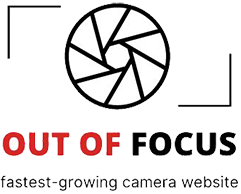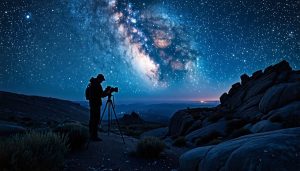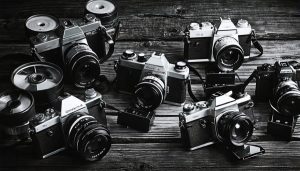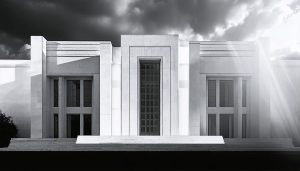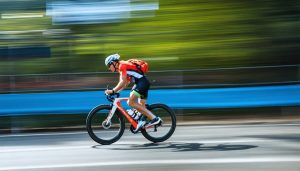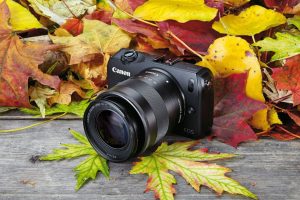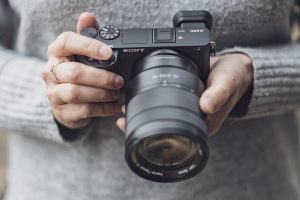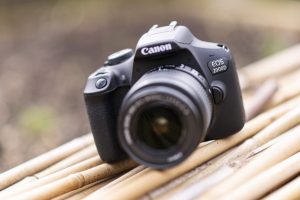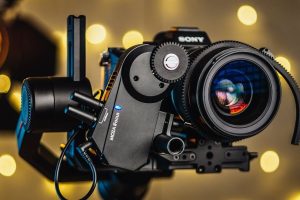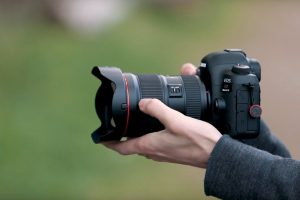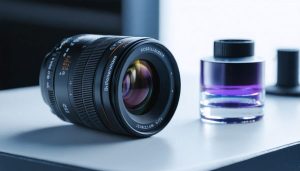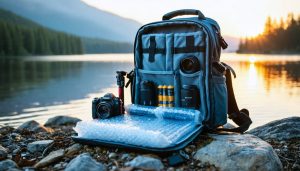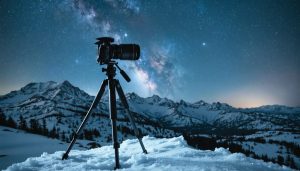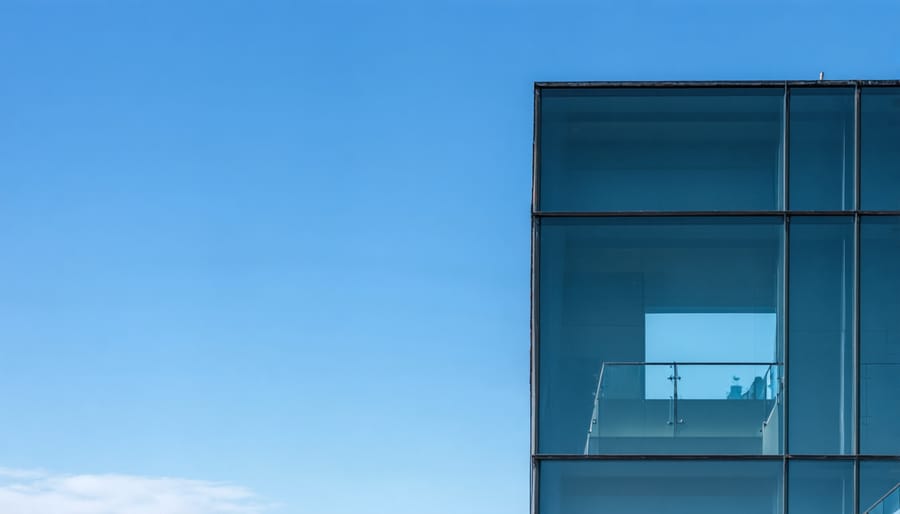
Strip away the visual chaos of city life through minimalist urban photography – where clean lines, negative space, and architectural geometry converge to create powerful visual statements. In this stark intersection of concrete and creativity, photographers transform bustling cityscapes into compelling abstract compositions that speak volumes through simplicity.
Minimalist urban photography challenges artists to see beyond the metropolitan noise, isolating singular elements that tell stories through absence rather than abundance. Whether it’s a solitary figure against a monochromatic wall, the sweeping curve of a modern building against an empty sky, or the interplay of light and shadow across urban textures, this genre demands both technical precision and an eye for reduction.
The art lies not just in what you capture, but in what you deliberately leave out. By embracing negative space, hunting for clean architectural lines, and mastering the interplay between light and form, photographers create images that cut through the visual clutter of city life to reveal something more essential. This approach transforms ordinary urban scenes into extraordinary artistic statements, proving that in photography, less truly can be more.
Through this exploration of urban minimalism, we’ll discover how to strip away the unnecessary and capture the city’s quiet moments of visual poetry.
The Art of Seeing Less in Urban Spaces
Isolating Urban Elements
In urban minimalist photography, mastering the art of isolation begins with training your eye to spot compelling standalone elements. While traditional architectural photography techniques often capture entire buildings, minimalism requires a more selective approach.
Start by looking for clean lines, singular shapes, and repeating patterns in urban environments. A curved staircase against a plain wall, a solitary window on an expansive facade, or the geometric shadows cast by building elements can all serve as powerful subjects. The key is to identify elements that can stand alone while still telling a compelling visual story.
Use your camera’s viewfinder or LCD screen as a cropping tool to experiment with different compositions. Moving physically closer or farther from your subject can dramatically change how isolated it appears. Consider shooting during early morning or late afternoon when shadows are longer and more defined, making it easier to separate elements from their surroundings.
Look for natural frames within the urban landscape that can help isolate your subject. Building edges, doorways, and architectural features can serve as perfect borders to draw attention to your chosen element while maintaining minimalist principles.
Negative Space in the City
Negative space is a powerful tool in urban minimalist photography, turning the seemingly empty parts of a city into compelling compositional elements. The stark walls of modern buildings, expansive sky above skyscrapers, and empty urban plazas all offer perfect opportunities to create striking minimalist images.
When working with negative space in urban environments, look for clean, uncluttered backgrounds that can emphasize your main subject. A solitary pedestrian against a vast concrete wall, or a single architectural detail floating in a sea of sky, can create a strong visual impact through contrast and isolation.
Consider shooting during off-peak hours when cities are less crowded, allowing you to capture pristine negative spaces without unwanted elements. Early morning light can cast dramatic shadows that create natural divisions in your frame, while overcast days provide soft, even illumination that emphasizes geometric patterns and textures.
Remember that negative space doesn’t have to be completely empty – subtle textures, gradients, or patterns can add depth to your composition while maintaining minimalist principles. The key is finding the right balance between your subject and the surrounding space, allowing each element to strengthen the other.
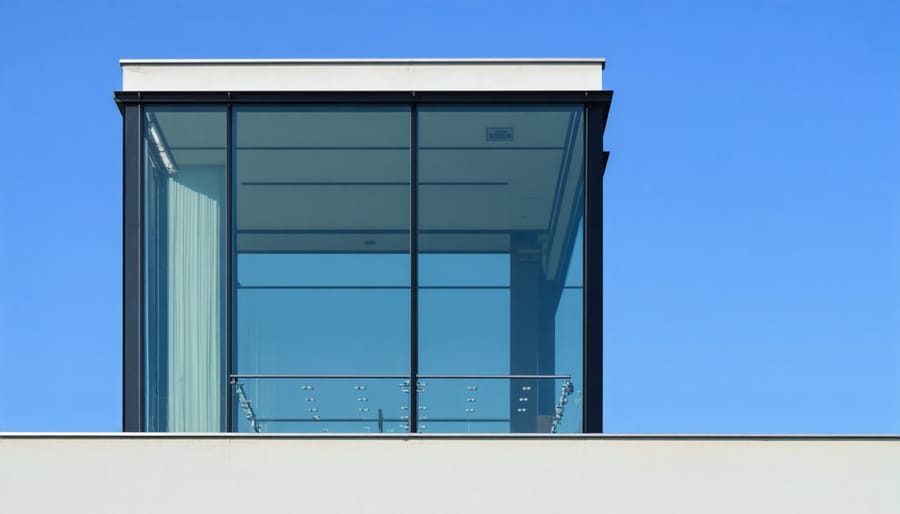
Essential Camera Settings for Urban Minimalism
Mastering Exposure for Clean Results
In urban minimalist photography, mastering exposure is crucial for achieving those clean, striking images that define the genre. The key lies in understanding how to balance your exposure triangle – aperture, shutter speed, and ISO – to capture pristine details while maintaining the stark simplicity that makes minimalist shots so powerful.
Start by shooting in RAW format and keeping your ISO as low as possible, ideally between 100-400, to minimize digital noise that can detract from your clean aesthetic. In urban environments, available light can be tricky, but resist the urge to bump up ISO unnecessarily. Instead, use a tripod when shooting in low-light conditions to maintain longer shutter speeds without introducing camera shake.
For architectural subjects, consider using aperture priority mode (A/Av) with settings between f/8 and f/11. This sweet spot ensures sharp details across your frame while maintaining enough depth of field to capture architectural elements clearly. When shooting against bright skies, don’t be afraid to slightly underexpose your image – it’s easier to recover shadow details in post-processing than to fix blown-out highlights.
The histogram is your best friend in minimalist photography. Aim for a balanced exposure with slight emphasis on the brighter end for white spaces, but watch for clipping. Using exposure compensation can help fine-tune your shots, especially when dealing with contrasting elements like white buildings against dark skies.
Remember, the goal is to capture clean lines and shapes with minimal noise and maximum impact. Take your time to meter correctly, and when in doubt, bracket your exposures to ensure you have options in post-processing.
Lens Choice and Perspective
In urban minimalist photography, your lens choice and shooting position play crucial roles in isolating compelling elements and creating striking compositions. Wide-angle lenses (16-35mm) excel at capturing broad architectural perspectives and emphasizing leading lines, making them ideal for minimalist cityscapes where geometric patterns dominate. However, telephoto lenses (70-200mm) offer unique advantages by compressing perspective and isolating architectural details, helping you create abstract compositions from building facades or urban structures.
When choosing your shooting position, consider how elevation changes can dramatically impact your composition. High vantage points often reveal cleaner geometric patterns and help eliminate distracting elements, while low angles can emphasize strong vertical lines and create a sense of scale. Experiment with different perspectives – try shooting straight-on for symmetrical compositions, or explore diagonal viewpoints to add dynamic tension to your images.
Distance from your subject matters significantly in minimalist urban photography. Standing further back with a telephoto lens allows you to flatten perspective and minimize dimensional complexity, while getting close with a wide-angle lens can emphasize depth and scale. Remember that the goal is to simplify your composition, so choose positions that allow you to exclude unnecessary elements and focus on the essential geometric forms, patterns, or textures that tell your visual story.
Post-Processing for Urban Minimalism
Contrast and Tone Control
In urban minimalist photography, mastering contrast and tonal control is crucial for creating images that command attention through their simplicity. The interplay between light and shadow becomes your primary tool for emphasizing geometric shapes and architectural elements.
Start by identifying the key tonal ranges in your scene. Urban environments often present stark contrasts between buildings and sky, making them perfect candidates for high-contrast processing or black and white conversion. When adjusting contrast, focus on creating clear separation between your subject and background while maintaining detail in both highlights and shadows.
The key is to be intentional with your adjustments. Instead of pushing contrast to extremes, look for the sweet spot where forms become distinct without losing subtle gradations. Use selective contrast adjustments to draw attention to specific elements while letting others recede into the background.
Pay special attention to your histogram during editing. For minimalist shots, you’ll often want to push the tones toward either end of the spectrum, creating deliberate negative space while maintaining detail in your main subject. Remember that contrast isn’t just about black and white – subtle tonal variations can be just as effective in conveying your minimalist vision.
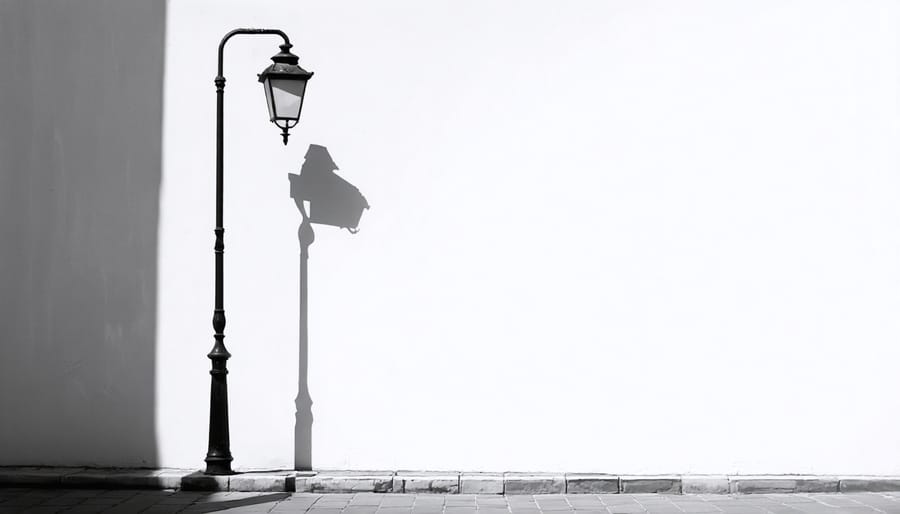
Removing Distractions
In urban minimalist photography, removing distractions is crucial for achieving clean, impactful compositions. Start by scanning your frame for unwanted elements like trash cans, excessive signage, or pedestrians that might detract from your subject. When possible, adjust your shooting position or angle to naturally exclude these elements – sometimes a few steps to the left or right can make all the difference.
Timing plays a vital role in eliminating human elements. Visit locations during off-peak hours, particularly early mornings or late evenings, when foot traffic is minimal. For architectural shots, consider shooting on weekends when business districts are quieter. If waiting isn’t an option, use long exposures to blur moving elements, transforming bustling streets into serene spaces.
In-camera techniques like selective focusing can help minimize background distractions by creating a shallow depth of field. When shooting, position yourself to use clean walls or empty spaces as backgrounds. Look for natural frames within the urban environment – doorways, archways, or building corners – that can help isolate your subject while blocking unwanted elements.
While post-processing can help remove distractions, aim to capture as clean an image as possible in-camera. This maintains authenticity and reduces editing time while preserving the natural essence of the scene.
Common Challenges and Solutions
Dealing with Crowds and Movement
Capturing minimalist shots in bustling urban environments requires strategic timing and positioning. Early mornings and late evenings typically offer fewer crowds, making it easier to achieve clean compositions. When shooting during busier hours, patience becomes your greatest ally – wait for natural breaks in foot traffic to capture your desired frame.
Consider elevating your position by shooting from bridges, stairs, or other vantage points. This perspective often eliminates ground-level distractions and creates cleaner sight lines. While navigating crowded spaces, be mindful of ethical considerations in street photography and respect personal space.
Use longer focal lengths to compress scenes and minimize unwanted elements. The compression effect can help isolate subjects and create more abstract compositions. When movement is unavoidable, try incorporating it intentionally – long exposures can transform busy streets into artistic blur patterns while maintaining minimalist principles.
For static architectural shots, position yourself strategically behind barriers or in corners where foot traffic naturally flows around you. This allows for more stable shooting conditions without disrupting the urban flow.
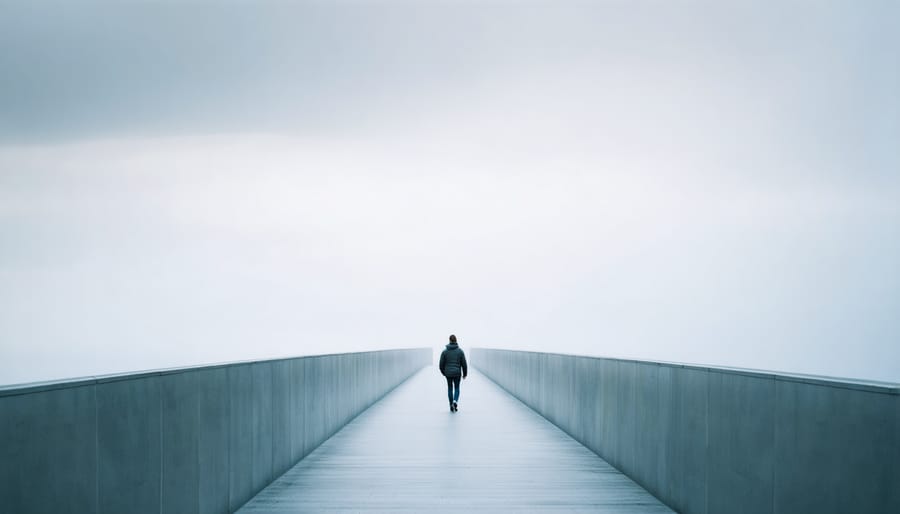
Weather and Lighting Conditions
Weather and lighting conditions play a crucial role in urban minimalist photography, often becoming the make-or-break element of your composition. Overcast days can be particularly favorable, as they create soft, diffused light that minimizes harsh shadows and helps emphasize clean lines and geometric shapes. These conditions are perfect for capturing the subtle textures and tones that define minimalist urban scenes.
Early morning and late afternoon golden hours offer dramatic opportunities, with long shadows that can become compositional elements themselves. The warm, directional light adds depth and dimension to otherwise flat surfaces, while creating interesting patterns that complement minimalist aesthetics.
Rainy conditions can transform urban landscapes into perfect minimalist canvases. Wet surfaces reflect light and create mirror effects, while foggy conditions naturally isolate subjects and reduce visual clutter. For those interested in pushing boundaries, night photography techniques can yield striking results, with artificial lighting creating bold contrasts and geometric patterns against dark backgrounds.
Consider shooting in various weather conditions to develop your style. Even seemingly “bad” weather can present unique opportunities for creating compelling minimalist images that stand out from the crowd.
Creative Projects to Try
Ready to put your urban minimalist photography skills into practice? Here are several engaging projects to help you develop your eye and technique:
The “Single Color Challenge”
Spend a day photographing urban scenes dominated by one color. Look for architectural elements, walls, or street furniture in your chosen hue, and compose minimalist shots that emphasize color harmony. This exercise trains you to see cohesive visual elements in busy city environments.
“Negative Space Stories”
Find locations where a single subject stands against vast empty spaces. This could be a lone pedestrian against a blank wall, a solitary street sign against an empty sky, or an isolated architectural detail. Challenge yourself to create compelling narratives using minimal elements.
“Geometric Abstracts”
Focus on capturing abstract compositions using urban geometry. Search for interesting intersections of lines, shapes, and patterns in buildings, bridges, or street markings. Try photographing these elements from different angles until the original subject becomes almost unrecognizable.
“Shadow Play”
Visit your location during different times of day to capture how shadows create minimalist compositions. Early morning and late afternoon work best, when long shadows can transform ordinary urban scenes into striking geometric patterns.
“The Rule of One”
Challenge yourself to compose images with just one main element. This could be a single window, door, street light, or any urban feature. The key is to find creative ways to make this solitary element command attention within the frame.
“Weather Effects”
Use fog, rain, or snow to naturally minimize visual clutter in urban scenes. These conditions can transform busy cityscapes into ethereal, minimalist compositions by obscuring background details and creating natural negative space.
Remember to experiment with different perspectives and compositions for each project. Sometimes the most striking minimalist images come from unexpected angles or unconventional viewpoints.
Urban minimalist photography offers a unique way to see beauty in simplicity within our bustling cities. By focusing on clean lines, negative space, and deliberate composition, you can transform ordinary urban scenes into striking artistic statements. Remember that success in this genre comes from patience, careful observation, and a willingness to experiment with different perspectives and techniques.
Whether you’re shooting architecture, street scenes, or urban details, the key is to maintain simplicity while telling a compelling visual story. Start by practicing the fundamental principles we’ve discussed: look for strong geometric shapes, embrace negative space, and pay attention to light and shadow. Don’t be afraid to break the rules occasionally – sometimes the most memorable minimalist images come from unexpected approaches.
As you develop your style, remember that post-processing should enhance rather than overshadow your composition. Keep editing subtle and purposeful, always serving your minimalist vision.
Most importantly, get out there and start shooting. Every city, from sprawling metropolises to small towns, offers countless opportunities for minimalist photography. With practice and persistence, you’ll develop an eye for finding simplicity amid urban complexity, creating images that resonate with viewers through their clean, powerful aesthetic.
